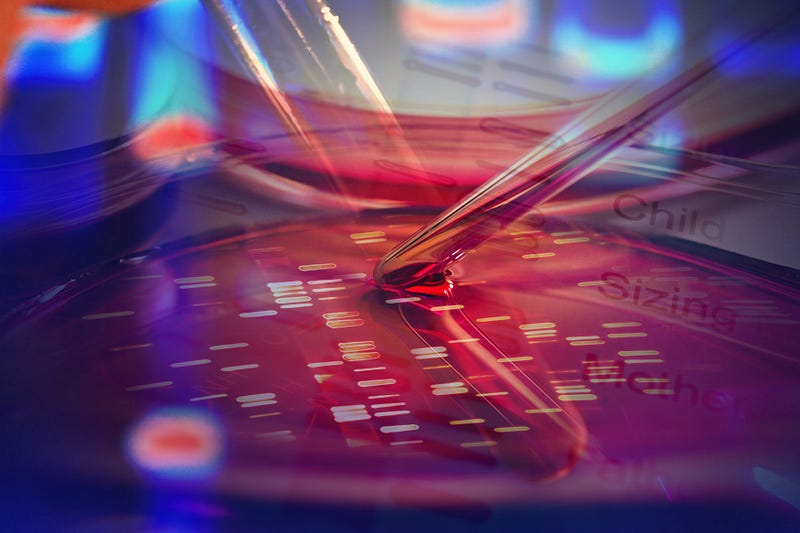Nanostraws: Advancement of biomolecule delivery
By Cailey Denoncourt, Bioengineering, 2022

Leading up to life-altering medical discoveries requires extensive research, but for this research to occur, the efficiency and accuracy of the instruments used are vital for better yield and results.
One of the biggest outbreaks and usage explorations have been with Clustered Regularly Interspaced Short Palindromic Repeats (CRISPR). This revolutionary discovery has changed how we look at our genome. CRISPR allows researchers to directly edit the human genome. Whether that be to remove a gene associated with Alzheimer’s or to give a cell a certain disease in order to analyze the effects of possible new treatments, CRISPR is a multi-faceted tool that we are still finding more ways to apply.
Huge breakthroughs in research have also been made for induced pluripotent stem cells (iPSCs), which are cells that are reversed programmed in order for researchers to reprogram these cells to become almost any cell in the human body. This is incredibly useful for disease modeling, drug development, and transplantation medicine. By reprogramming a patient’s cells to help treat diseases like Alzheimer’s, the cell transplantation are cells taken directly from the same patient, thus avoiding certain risks like immune rejection.
However, with CRISPR and iPSCs comes the research challenge of determining the best way to inject the gene-altering molecule or specific reprogramming factors into the proper cells. Thus, reviewing the most effective and accurate methods for injecting these biomolecules is just as important for the success of the implementation of these discoveries.
With CRISPR and iPSCs comes the research challenge of determining the best way to inject the gene-altering molecule or specific reprogramming factors into the proper cells.
Current methods for biomolecular injection involve most commonly microinjection or electroporation. Microinjection uses a needle to directly inject the molecule into the cell of interest at an extremely high success rate but is a difficult process to perform and takes an extensive amount of time.
Another commonly used technique is electroporation, which induces electric fields on the cell membrane to momentarily open the pores in the membrane to allow for molecules like DNA to enter the cell. However, electroporation on its own often kills the cells and is imprecise. Other less-popular methods include using viruses to deliver the molecules into the cells, but viruses come with many of their own risks, including the danger the virus poses to the cell itself.
As a safer method, chemicals, including different lipids or inorganic fertilizers, are used but are all not proven with CRISPR or fail to accurately pinpoint the specific cell to be injected. Although these methods can deliver the molecules needed, something more precise and accurate could better aid important research efforts.
This technique involves applying electric fields to the cell membrane, similarly to traditional electroporation, but instead, the molecules are injected into the cell by very long and narrow “straws” that allow researchers to concentrate the electric field in very specific, small areas.
Dr. Nicholas Melosh and his team from Stanford University have been examining the effectiveness of delivering molecules like messenger ribonucleic acid (mRNA), DNA, and other macromolecules directly to the cells through Nanostraw Electroporation System (NES). This technique involves applying electric fields to the cell membrane, similarly to traditional electroporation, but instead, the molecules are injected into the cell by very long and narrow “straws” that allow researchers to concentrate the electric field in very specific, small areas. By altering the voltage, duration, and concentration, the technique can be controlled to the specific conditions requested by the researcher. This allows for more control over the amount and location of the biomolecules compared to the alternative methods.
This technique has been proven quite effective as Melosh successfully delivered mRNA to human embryonic stem cells, human fibroblasts, mouse primary glial cells, and mouse primary neuron cells. These cells are typically hard to reach by biomolecular injection but were effectively reached when using NES.
Other methods have shown to be less effective in biomolecule delivery as cell density increases, but Melosh tested a range of densities, and NES showed no significant difference between the varying densities and the effectiveness of NES to deliver mRNA molecules. However, it would be useless unless the molecules being delivered are still functional. Using cas-9 protein, which is the molecule in CRISPR, about 90% of the cells were injected with 25–31 percent of the cells indicating the gene editing. Although the editing efficiency seems low, it has been observed in other studies that the editing efficiency for the particular cas-9 gene tested is accepted to be around 33 percent, which is only slightly higher than what was seen using NES.
As the proven success continues, researchers are looking to work with human immune cells, which are difficult to work with due to their fragility. However, NES demonstrated some variability in the distribution of biomolecules between the injected cells, which does not greatly affect the viability of the method but should be further addressed for consistency. Despite the flaw, NES still shows great promise in helping aid the research in the treatment or modeling of many diseases through CRISPR, iPSCs, and many other applications for biomolecule delivery.
Science Advances (2018). DOI: 10.1126/sciadv.aat8131